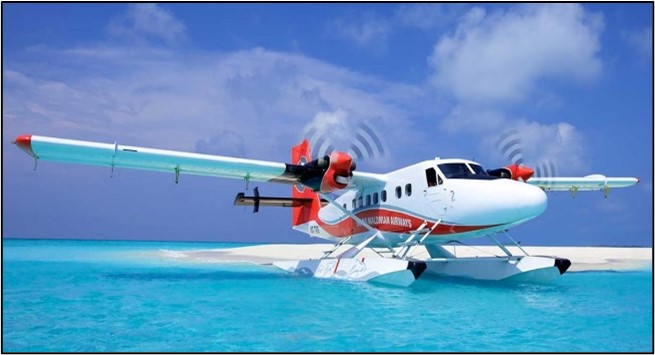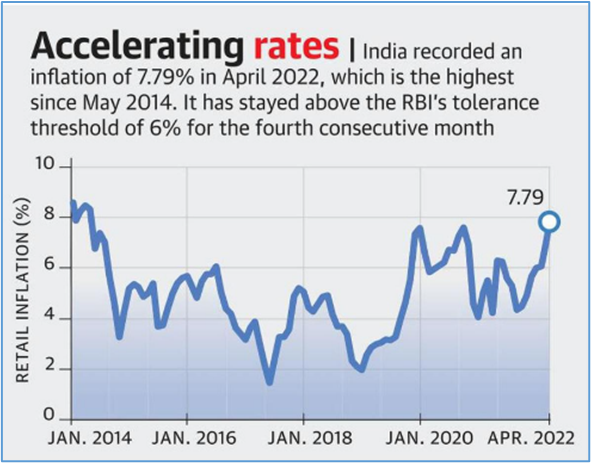Thursday, 19th May 2022
World Bank’s Governance Indicators
In News
In an analysis of the World Bank’s World Governance Indicators (WGI), a key input for India’s sovereign ratings, India’s scores were “much below” its peers on all counts.

About the WGI
- World Bank Worldwide Governance Indicators (WGI) provides a ranking of 215 countries and territories based on six dimensions.
- The indicators measure six broad definitions of governance, capturing the key elements of this definition:

- The indicators represent the views of thousands of stakeholders worldwide, including respondents to household and company surveys, experts from nongovernmental organizations, public sector agencies and providers of commercial business information.
- Various data sources like Economist Intelligence Unit, World Justice Project, WEF Global Competitiveness Report etc. influence the WGI score.
India’s concerns regarding WGI
- India’s WGI score is much below the BBB Median on all six indicators.
- This could possibly downgrade our Sovereign Ratings to junk.
- While BBB is an investment-grade rating issued by global rating agencies such as S&P and Fitch, a WGI score below BBB Median would suggest that India falls below the middle when the scores of countries are arranged in a descending order.

Why has India received negative commentary from agencies?
- According to the analysis, among the various issues, Jammu and Kashmir Reorganisation Act of 2019, Citizenship Amendment Act, 2019, National Register of Citizens etc. are seen as ‘threatening secular nature’ of the country.
- The analysis further noted that in many cases, the think-tanks do not have an India expert or have not updated their information. Many of them base their rankings on cursory surveys of opinions from a small number of journalists/ NGOs/ academics.
Sources:
UN report on Child malnutrition
In News
United Nation (UN) has recently released a report titled “Severe wasting: An overlooked child survival emergency” on child malnutrition.
Major Findings
- About: Where children are too thin for their height resulting in weakened immune systems – is the most immediate, visible and life-threatening form of malnutrition.
- Currently, at least 10 million severely wasted children – or 2 in 3 – do not have access to the most effective treatment for wasting, ready-to-use therapeutic food (RUTF).
- Geographic distribution: South Asia remains the ‘epicentre’ of severe wasting, where roughly 1 in 22 children is severely wasted, three times as high as sub-Saharan Africa.

- Factors: Events such as war in Ukraine, economies struggling with pandemic recovery, and persistent drought conditions in some countries due to climate change – is creating conditions for a significant increase in global levels of severe wasting.
- Soaring prices: The price of ready-to-use therapeutic food is projected to increase by up to 16 per cent over the next six months due to a sharp rise in the cost of raw ingredients.
- It is feared to leave up to 600,000 additional children without access to life-saving treatment at current spending levels while increasing the shipping and delivery costs.
- Shrinking global Aids: The aid for wasting remains woefully low and is predicted to decline sharply in the coming years. According to a new analysis for the brief, global aid spent on wasting amounts to just 2.8 per cent of the total health sector ODA and 0.2 per cent of total ODA spending.

What are the major recommendations?
- Increasing aids: Governments should increase wasting aid by at least 59 per cent above 2019 ODA levels to help reach to help reach all children in need of treatment in 23 high burden countries.
- Inclusive policy: Countries should include treatment for child wasting under health and long-term development funding schemes so that all children can benefit from treatment programmes, not just those in humanitarian crisis settings.
- Budgetary support: Governments should ensure that adequate budget allocations are provided to address the global hunger crisis include specific allocations for therapeutic food interventions to address the immediate needs of children suffering from severe wasting.
- Support from NGOs: Donors and civil society organizations to prioritize funding for wasting to ensure a diverse, growing and a healthy ecosystem of donor support.
Sources:
India’s new Indigenous warships
In News
The Defence Ministry has recently launched two indigenous warships of the Indian Navy at Mumbai’s Mazagon Dock Ltd (MDL).
About the News
- These two warships- INS Surat and INS Udaygiri will be among the most technologically advanced missile carriers in the world that will cater to the present as well as future requirements.
- While Surat is the fourth guided missile destroyer built under the Indian Navy’s Project 15B, advanced stealth frigate warship Udaygiri is part of Project 17A.
- The two warships have been designed by the Directorate of Naval Design (DND) and built at MDL.
- Around 75% of the equipment and systems required for building the two ships was sourced from indigenous firms, including MSMEs as part of Atmanirbhar Bharat mission.

INS SURAT
- ‘Surat’ is the fourth ship of Project 15B Destroyers, which heralds a makeover of the P15A (Kolkata Class) Destroyers.
- The P-15B destroyers were to incorporate new design concepts for improved survivability, sea keeping, stealth and manoeuvrability.
- INS Surat is named after the commercial capital of the state of Gujarat famous for its rich maritime and shipbuilding history and also the second largest commercial hub of western India after Mumbai.
- This ship has been built using the Block construction methodology, which involved hull construction at two different geographical locations and has been assembled at MDL, Mumbai.
- The ship will have state-of-the-art weapons and sensors, including a vertically launched missile system for long-distance engagement of shore and sea-based targets and will be equipped to carry and operate two multiple role helicopters.
- The first ship of this class was INS Visakhapatnam, commissioned in 2021 and the other two-Mormugao and Imphal-have been launched but not commissioned yet.
- All three, including Surat, are likely to be commissioned between 2023 and 2025.
INS UDAYGIRI
- This is the third ship of Project 17A Frigates, and are follow-on of the P17 Frigates (Shivalik Class) with improved stealth features, advanced weapons and sensors and platform management systems.
- Various novel concepts and technologies such as Integrated Construction, Mega Block Outsourcing, Project Data Management/ Project Lifecycle Management (PDM/PLM) etc have been adopted for the first time in indigenous Warship Design and Construction in this project.
- The first two ships of P-17A were launched in 2019 and 2020.
Source:
- Explained: Where two new ships will figure in the Navy’s overall expansion plan
- Explained | The significance of India’s new indigenous warships Surat and Udaygiri
Image source:
Neelam Sanjiva Reddy
On May 19, 1913, the sixth president of India, Neelam Sanjiva Reddy was born. He was also the first chief minister of Andhra Pradesh, credited with the architecture and modernisation of the state. Like many from his generation, he was also inspired by Gandhi’s thoughts, words and actions. Following his footsteps, he gave up Western products and began wearing only khadi clothes as he joined India’s freedom struggle.

At the age of 64, Reddy went on to become the first President of India to be elected unopposed in 1977, and the youngest to occupy Rashtrapati Bhavan, only to renounce the residency soon after and take a 70 per cent cut in his salary to support the poor in 1977. Reddy served thrice as President of the Indian National Congress at its Bangalore, Bhavnagar and Patna sessions during 1960 to 1962. eddy authored a book, Without Fear or Favour: Reminiscences and Reflections of a President, published in 1989.
Sources:
Health Data Management Policy,2022
In News
The National Health Authority (NHA) has recently released the revised draft of Heath Data Management (HDM) policy
About the News
- The draft policy is in realisation of the mandates under the ABDM which was first launched in December 2020.
- The NHA is the successor of the National Health Agency, which created for full functional autonomy.
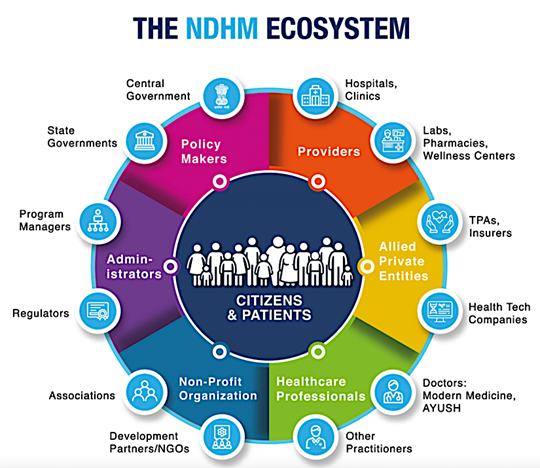
- The NHA is the apex body responsible for implementing India’s flagship public health insurance scheme called Ayushman Bharat Pradhan Mantri Jan Arogya Yojana.
- The NHA has been assigned with the task of designing strategy, building technological infrastructure and implementation of National Digital Health Mission (NDHM) to create a National Digital Health Eco-system.
What is Health Data Management?
- Health Data Management (HDM), also known as Health Information Management (HIM) is the systematic organization of health data in digital form.
- This can be anything from Electronic Medical Records (EMR) generated as a result of doctor visits, to Electronic Health Records (EHR), to handwritten medical notes scanned to a digital repository.
Major highlights of the draft HDM policy
- Objective: The key objective of HDM policy is to provide adequate guidance and to set out a framework for the secure processing of personal and sensitive personal data of individuals who are a part of the NDHE in compliance with all applicable laws.
- Create Awareness : HDM policy also aims to increase awareness of the importance of data privacy and instil a privacy-oriented mindset among the members of ABDM and its ecosystem partners.
- Applicability: The provisions of this policy shall be applicable to all the entities and individuals who are part of the Ayushman Bharat ecosystem.
- Interoperability: The NDHE is based on the principle of federated architecture, which allows interoperability between independent and decentralized information systems, while enhancing the security and privacy of personal data of individuals.
- Storage of the data collected across the National Digital Health Ecosystem (NDHE) will be ensured at the central, the state or Union Territory and health facility level.
- Ease of Accessibility: To create a system of digital health records which is easily accessible to individuals and healthcare service providers and is voluntary in nature, based on the consent of individuals, and in compliance with relevant standards.
- Integration with Existing Systems: The Policy will also work to leverage the information systems existing in the Indian health sector by encouraging conformity with the defined data privacy standards and integrating such existing systems with NDHE.
Advantages of HDM policy
- Streamlined: It will provide adequate guidance and set out a framework for the secure processing of personal and sensitive personal data of individuals who are a part of the NDHE in compliance with all applicable laws.
- Data security: It will help safeguarding digital personal data within the ambit of the NDHE, including the Personal Health Identifier, the electronic health records and electronic medical records.
- Uniform ecosystem: It will help create a single platform of digital health records which will be easily accessible to individuals and healthcare service providers.
- Improved awareness: It will help increase awareness of the importance of data privacy and instil a privacy-oriented mindset among the members of ABDM and its ecosystem partners.
- Improved patient engagement: Better target of patients with reminders and care suggestions that can be relevant for them, based on predictive modelling.
- Improved health outcomes: It will help track health trends in certain areas or among specific populations, predict new trends and suggest proactive measures to counter rising health issues.
- Better business decision making: It will help healthcare providers make better data-driven decisions, such as which types of medical professionals to recruit, what equipment to invest in, or which types of patients to focus on in marketing efforts.

Challenges to Health Data Management
- Fragmented data: Medical data stored in different spreadsheets or databases, images or video files, digital documents, scanned paper documents have chances of data theft or duplication.
- Scalability: the fastest-growing segment of healthcare data is unstructured data such as MRIs, CT scans, X-ray and PET scans. As this data grows to Petabytes, healthcare organizations need a highly scalable, low-cost storage solution.
- Compliance: Data collected and its storage provision lacks any mandate of steps aimed at securing it such as Role-Based Access Controls (RBAC), audit trail logging or data encryption.
- Data resiliency and protection: Health data is a frequent target for cyberattacks and represents a major risk for providers if it is accidentally lost or deleted.
Way Forward:
- Cloud flexibility: Storage systems should provide redundancy, replication, data backup, and erasure coding that can distribute fragments of data across multiple nodes.
- Broad integrations: Government can take steps to integrate numerous healthcare applications and archive solutions, allowing it to be used as a central repository, with access to a complete view of patient information.
- Security and compliance: NHA can take steps to incorporate security features including data encryption and transparent key management for storage of immutable data.
- Data protection—Steps to provides data durability as well as data protection through multi-stage verification process as used in case of UPI.
Question: Critically Analyse the Health Data Management system, as proposed by the draft Health Data Management Policy
Sources:
- Draft Health Management Policy:
- Draft report:
- Health Data Management Guides:
- NHA revises draft Health Data Management policy for Data Privacy:
Image:
Denisovans Teeth
This is image of the wisdom tooth of a child, most likely a girl, discovered in a cave in Laos, where it was likely deposited 13,000 to 16,000 years ago.
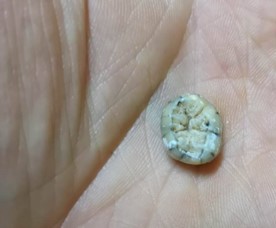
The Findings throw new light on the regions inhabited by Denisovans, and their interbreeding with the ancestors of modern humans. Denisovans lived lakhs of years ago, coexisting with Neanderthals in some regions, and interbreeding with early modern humans in some cases. So far, it was known that Denisovans were only found in cold and high-altitude regions such as in Siberia and the Himalayas. This discovery proves that they were also adapted to a warm environment. It also confirms recent genetic findings that some populations (Negrito from Philippines, Papuans and Australian Aborigines) have 3 to 5% of Denisovan genes.
Source:
Central Administrative Tribunal
- Context: The Supreme Court has recently ordered that the existing judicial and administrative members of Central Administrative Tribunal (CAT) to keep working even after end of their tenure, to keep the tribunal, functional.

- The court has given the order in the exercise of its jurisdiction under Article 142 of the constitution in the backdrop of huge vacancies in the tribunal (60% vacancies).
- The CAT was created by the Administrative Tribunals Act in 1985 under Article 323A of the Constitution.
- Its jurisdiction extends to the all-India services, the Central civil services, civil posts under the Centre and civilian employees of defence services.
- However, the members of the defence forces, officers and servants of the Supreme Court and the secretarial staff of the Parliament are not covered by it.
- The CAT is a multi-member body consisting of a chairman and members who are drawn from both judicial and administrative streams and are appointed by the
- They hold office for a term of five years or until they attain the age of 65 years, in case of chairman and 62 years in case of members, whichever is earlier.
- The CAT is not bound by the procedure laid down in the Civil Procedure Code of 1908.
- It is guided by the principles of natural justice.
Source:
Image source:
Bangabandhu
- Context: The documentary film on the life of Bangabandhu is being made by the Indian national award-winning filmmaker Goutam Ghosh.
- Bangabandhu Sheikh Mujibur Rahman, Bangladesh's founding father, was born in the Faridpur district of modern-day Bangladesh in 1920.

- He was the first President of Bangladesh and later served as Prime Minister.
- Mujib is considered to have been a fundamental figure in the efforts to gain political autonomy for East Pakistan and later as the central figure behind the Bangladesh Liberation Movement and the Bangladesh Liberation War in 1971.
- The Joint River Commission (JRC), the body in charge of overseeing issues concerning 54 transboundary rivers, and Protocol on Inland Water Trade and Transit are some of the legacy of Bangabandhu’s period.
- In recognition of his achievements, India conferred him the Gandhi Peace Prize 2020.
- Further, India has established Bangabandhu chair in the Delhi University to honour him.
Source:
- Bangabandhu inspiring India-Bangladesh relations
- India confers Gandhi Peace Prize 2020 on Sheikh Mujibur Rahman, Bangladesh expresses ‘deep gratitude’
- India establishes Bangabandhu chair; calls Mujib voice against radicalism
Image source:
Ujh Multipurpose Project
- Context: The Centre has recently reviewed the progress of Ujh Multipurpose Project in Jammu & Kashmir.
- Ujh River is a tributary of the Ravi river, in the Kathua district of Jammu and Kashmir.
- The project has three components – hydropower generation, irrigation and drinking water.

- It was declared as a “national project” in the year 2008, and involves the construction of 116-metre high concrete face rock fill dam.
- Utilisation of waters of the eastern rivers have been allotted to India as per the Indus Water Treaty.
- This project is of national importance, providing geo-political strategic advantage in form of much more effective use of water of Ujh river.
- It will ameliorate the agricultural and power sectors in the barren Kandi area which is under the peril of impending water crisis during dry season.
Source:
- Setting Aside Environmental Concerns, J&K Govt Clears Transfer of Land for Ujh Project
- Strategically important Ujh hydroelectric project in J&K gets forest panel nod
Image source:
Vadnagar’s ties with Buddhism
- Context: PM of India mentioned Vadnagar of Gujarat, which has been a great centre for Buddhist learning centuries ago, during his visit to Lumbini, Nepal.
- The excavation of the site by the Archaeological Survey of India (ASI) in 2014 have thrown up Buddhist relics and around 20,000 artefacts, dating back to the 2nd century.

- Besides, terracotta sealing excavated here have inscriptions of namassarvagyaya and a face-shaped pendant with tritatva symbol.
- Around 64 natural rock shelters modified into a dwelling place for monks, 40 votive stupa, a large stupa found on the top of a hill, and another six stupas were found near the town.
- Vadnagar is mentioned often in the Puranas and even in the travelogue of the great Chinese traveller, Hiuen Tsang (7th century), as a rich and flourishing town”.
Source:
Image source:
Regulatory Reboot: The Hindu Businessline
Essence: New Chairperson of SEBI has her task cut out to strengthen regulatory capabilities of the capital market regulator. Rising retail participation in the market led to offerings of new products and asset classes like curated stock portfolios and digital gold which needs update of regulatory rules. Use of social media and apps that encrypt and instantly purge messages are making putting checks on illegal practices like insider trading and front-running difficult. SEBI’s regulations must be rewritten to plug this gap.
Since regulations have not been updated in a while, it is high time that SEBI undertake this exercise at the earliest. SEBI must also focus on acquiring skill sets and regulatory powers to keep the capital market safe.
Why should you read this article?
- To understand issues being faced by SEBI in regulating the capital market because of the changing technological ecosystem.
- To know about suggestions for SEBI to deal with this issue.
Source:
Improving cold chain systems: The Hindu
Essence: The article focuses its attention on presence of cold chain infrastructure which act as critical artery for future pandemic preparedness and vaccination delivery. While manufacturing the vaccine doesn’t save lives, vaccination does. Covid pandemic brought to light the weak link of cold chain infrastructure for delivering and distributing vaccinations at the last mile, especially in far-flung areas. In addition, under Mission Indradhanush, India relies on Universal Immunization Program (UIP) to deliver routine immunization to as many as 5 crore new born and new mothers.
Potency and effectiveness of vaccines depends on storage temperature, and around 20% of such temperature sensitive healthcare products go to waste in India. Since 95% of cold chain points are located below district level, it is mandated to supply continuous electricity to the medicine storage facilities.
It’s a great step to digitize the supply of vaccines through Electronic Vaccine Intelligence Network and delivery through Co-WIN platform. Focusing on solar electricity (eg Chattisgarh with 70%+) at local health centres would help in improving health delivery and prepare for future pandemic.
Why should you read this article?
- To know the significance of cold chain infrastructure for medicine delivery in India.
Source:
Delimitation fallout needs no political forecasting: The Hindu
Essence: The editorial provides an insight into changes in the state-wise population of India and how it might impact the delimitation of parliamentary constituencies. Delimitation of constituencies was extended twice, in 1976 and in 2001, and now, it is due to be done in 2026, which would base its demarcation on the latest census. According to Census 2011, approx. 50% of India’s population is contributed through 5 states- UP, Maharashtra, Bihar, WB and MP. In fact, according to projections for 2026, UP, Bihar and Rajasthan’s population has grown over 1% of their population in 1971. On the other hand, southern states of TN, Andhra (undivided) and Kerala would see a population decline of 1-2% each over the same years.
Since population of all states hasn’t stabilized, conducting a delimitation exercise and giving higher representation to states with more population could solve the mandate of democratic representation but would work against the federal balance towards those states which took steps to balance their population. Hence, the most feasible option would be to freeze the delimitation exercise till the time India achieves population stabilization. It would be a pragmatic step to give due share of recognition to the southern Indian states which have felt alienated in front of the north (upper India).
Why should you read this article?
- To understand the reason for carrying out delimitation exercise.
- To know the spatial change in population of the country.
Source:
Sensitisation against Child Marriage
Background
Koyel Sarkar, 19, is the leader of an all-girls club in Siliguri that fights to eradicate child marriage in her village, and they have prevented eight child marriages in the last two years alone.
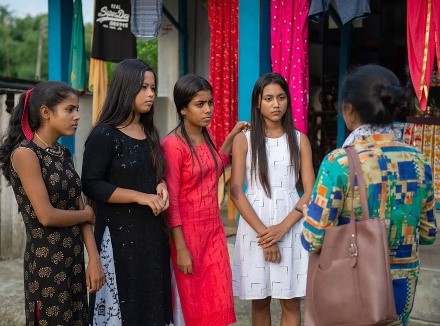
About Koyel’s Journey:
- Koyel is the leader of her village's 25-member "Girl Power Group, a community-led effort backed by the NGO World Vision India. This programme includes almost 1,500 females from 65 villages spread over three Darjeeling blocks.
- The girls are responsible for educating their peers as well as other citizens about topics such as child rights, human trafficking, and child marriage.
- Her job entails making public statements in the local market to raise awareness about child marriages, performing street plays, and speaking with members of her community to gather information about an upcoming child marriage.
Quote: “Most people simply don’t know the extent of the problem. An estimated 25000 child marriages occur every day. That’s mind-boggling, so much so that to many people it becomes abstract, unreal.”- Gavin Weston
Source:
Share the article
Get Latest Updates on Offers, Event dates, and free Mentorship sessions.

Get in touch with our Expert Academic Counsellors 👋
FAQs
UPSC Daily Current Affairs focuses on learning current events on a daily basis. An aspirant needs to study regular and updated information about current events, news, and relevant topics that are important for UPSC aspirants. It covers national and international affairs, government policies, socio-economic issues, science and technology advancements, and more.
UPSC Daily Current Affairs provides aspirants with a concise and comprehensive overview of the latest happenings and developments across various fields. It helps aspirants stay updated with current affairs and provides them with valuable insights and analysis, which are essential for answering questions in the UPSC examinations. It enhances their knowledge, analytical skills, and ability to connect current affairs with the UPSC syllabus.
UPSC Daily Current Affairs covers a wide range of topics, including politics, economics, science and technology, environment, social issues, governance, international relations, and more. It offers news summaries, in-depth analyses, editorials, opinion pieces, and relevant study materials. It also provides practice questions and quizzes to help aspirants test their understanding of current affairs.
Edukemy's UPSC Daily Current Affairs can be accessed through:
- UPSC Daily Current Affairs can be accessed through Current Affairs tab at the top of the Main Page of Edukemy.
- Edukemy Mobile app: The Daily Current Affairs can also be access through Edukemy Mobile App.
- Social media: Follow Edukemy’s official social media accounts or pages that provide UPSC Daily Current Affairs updates, including Facebook, Twitter, or Telegram channels.

